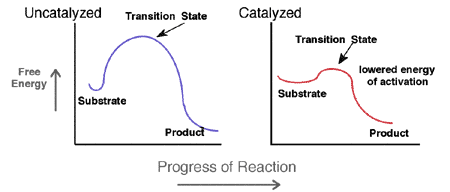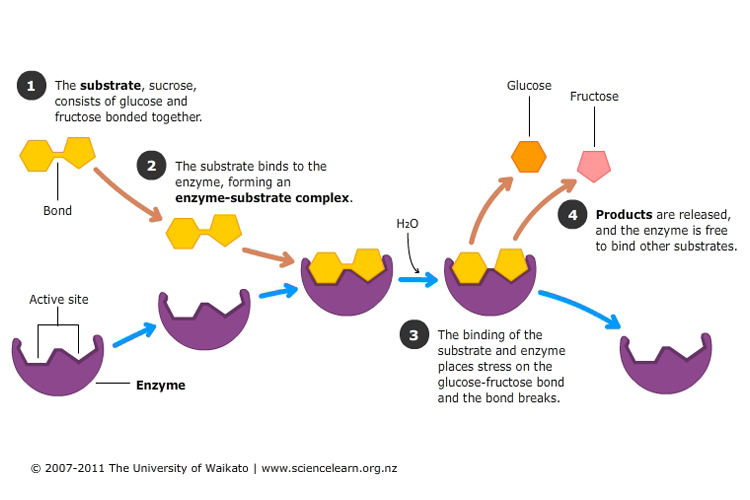How can chemical reactions affect the decomposition of important nutrients in food?
1 Answer
Witout going into muchdetail, the goal of digestion is to allow for the release of small molecules (what we call nutrients) that can be absorbed through the wall of the gut and transported to cells and tissues throughout the body - this is done by the circulatory system.
Technically, the only chemicals needed to break down nutrient molecules are water and acid; however, your digestive system cannot depend solely on water and acid for this process because the process would be very slow, and because consumed fats would be very hard to digest by water and acid alone (fats are not soluble in water). I'll come back to this at the end of the post.
Ingested food is broken down (this is also called hydrolysis) into usable nutrients by digestive enzymes, which are proteins that can increase the speed of this process.
Enzymes act as a catalyst, essentially allowing for the rate of production of "products" to be greater than it would have been without the presence of the catalyst - in other words, enzymes lowe the activation energy of reactions that take place in the digestive system.

SInce there are currently close to 4,000 enzymes identified in human cells, I'll just list a few of them here
Lipase - splits fats;
Lysozyme - splits bacterial carbohydrates;
Pepsin - splits proteins;
Rennin - curdles milk;
Ribonuclease - splits compounds in food for inclusion in ribonucleic acid chains;
Phosphoglucomutase - exchanges phosphates between carbohydrates;
Aconitase - rearranges citric acid;
Cytochronies - transfers electrons in cell respiration;
So, in order for your digestive system to tackle fats, it must first make them soluble in water. Bile salts produced by the pancreas surround fat molecules and pull them into the enzyme-water mixture present in the intestine. Lipase then inserts water across the bonds, which breaks down two molecules called fatty acids away from a third one, a monoglyceride - all then absorbed by the intestines.
Here's a nice diagram showing the action of another enzyme, sucrase, on sucrose (a sugar):

A video on the action of enzymes:

